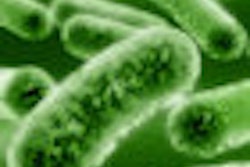Mass spectrometry presents a unique method for analyzing gingival crevicular fluidas a source of biomarkers for predicting periodontal disease progression, according to a new study in the Journal of Periodontal Research (October 11, 2012).
Researchers from the University of Melbourne used mass spectrometry to examine the relationship between the relative amounts of proteins and peptides in gingival crevicular fluid and their relationship with clinical indices and periodontal attachment loss in periodontal maintenance patients.
They followed 41 periodontal maintenance subjects over a one-year period, with clinical measurements taken at baseline and three-month intervals thereafter. Gingival crevicular fluid was collected from the subjects at each visit and was analyzed using matrix-assisted laser desorption/ionization time-of-flight (MALDI-TOF) mass spectrometry.
Samples were classified based upon pocket depth, modified gingival index (MGI), plaque index, and attachment loss. A genetic algorithm was used to create a model based on pattern analysis to predict sites undergoing attachment loss.
Using this method, the study authors analyzed 385 gingival crevicular fluid samples. Twenty-five sites under observation in 14 patients exhibited attachment loss of more than 2 mm over the 12-month period, they reported. They found that clinical indices pocket depth, MGI, plaque levels, and bleeding on probing were poor discriminators of gingival crevicular fluid mass spectra. However, models generated from the gingival crevicular fluid mass spectra were able to predict site-specific attachment with high specificity (97% recognition capability and 67% cross-validation), they noted.
"The use of algorithm-generated models based on gingival crevicular fluid mass spectra may provide utility in the diagnosis of periodontal disease," the researchers concluded.



















